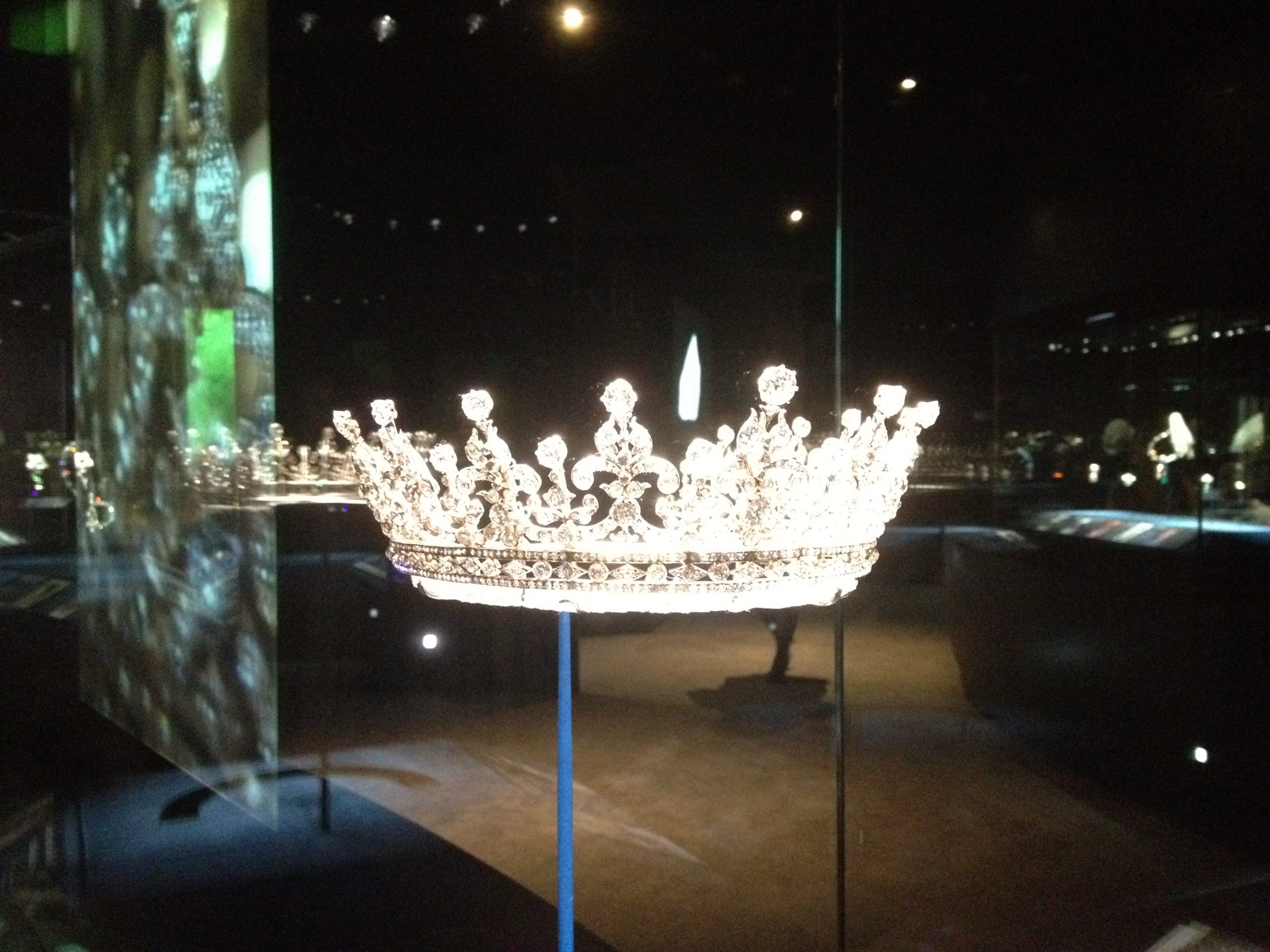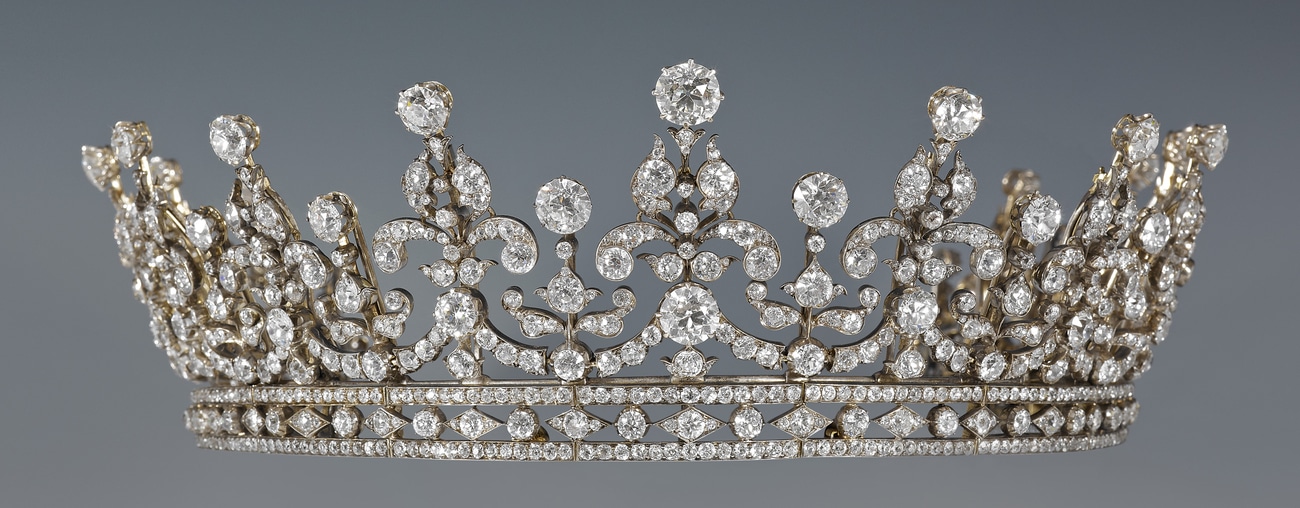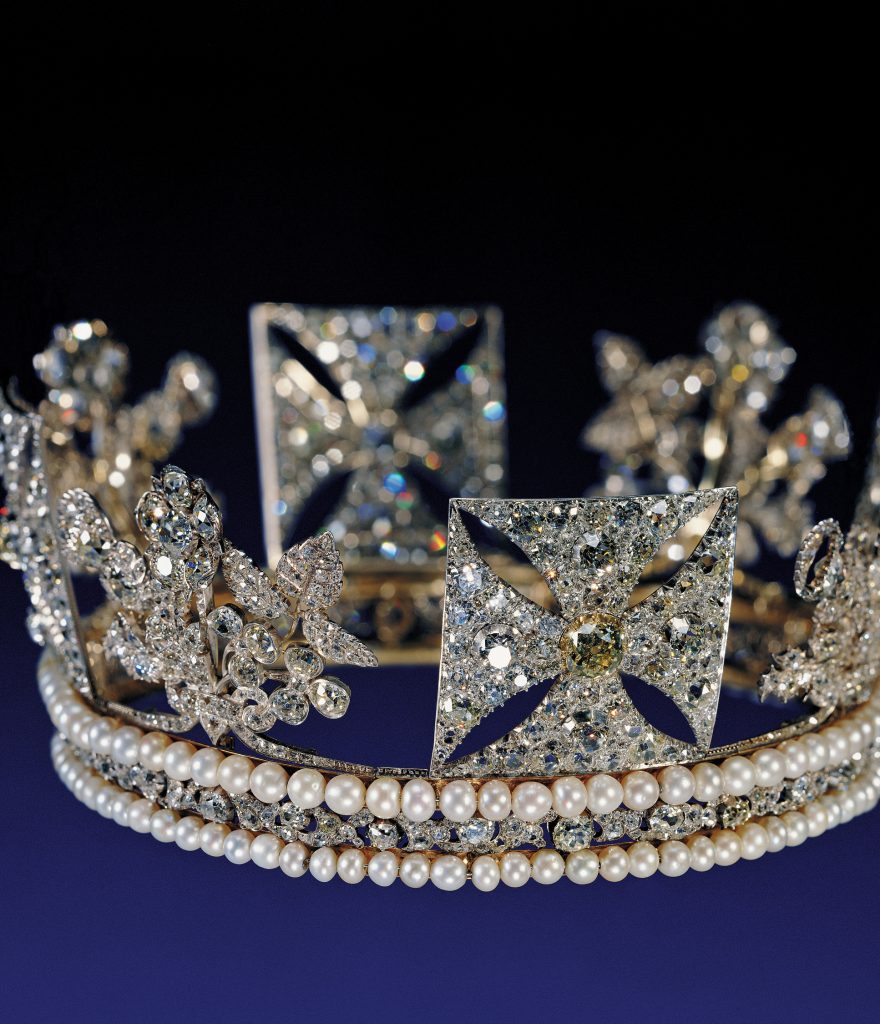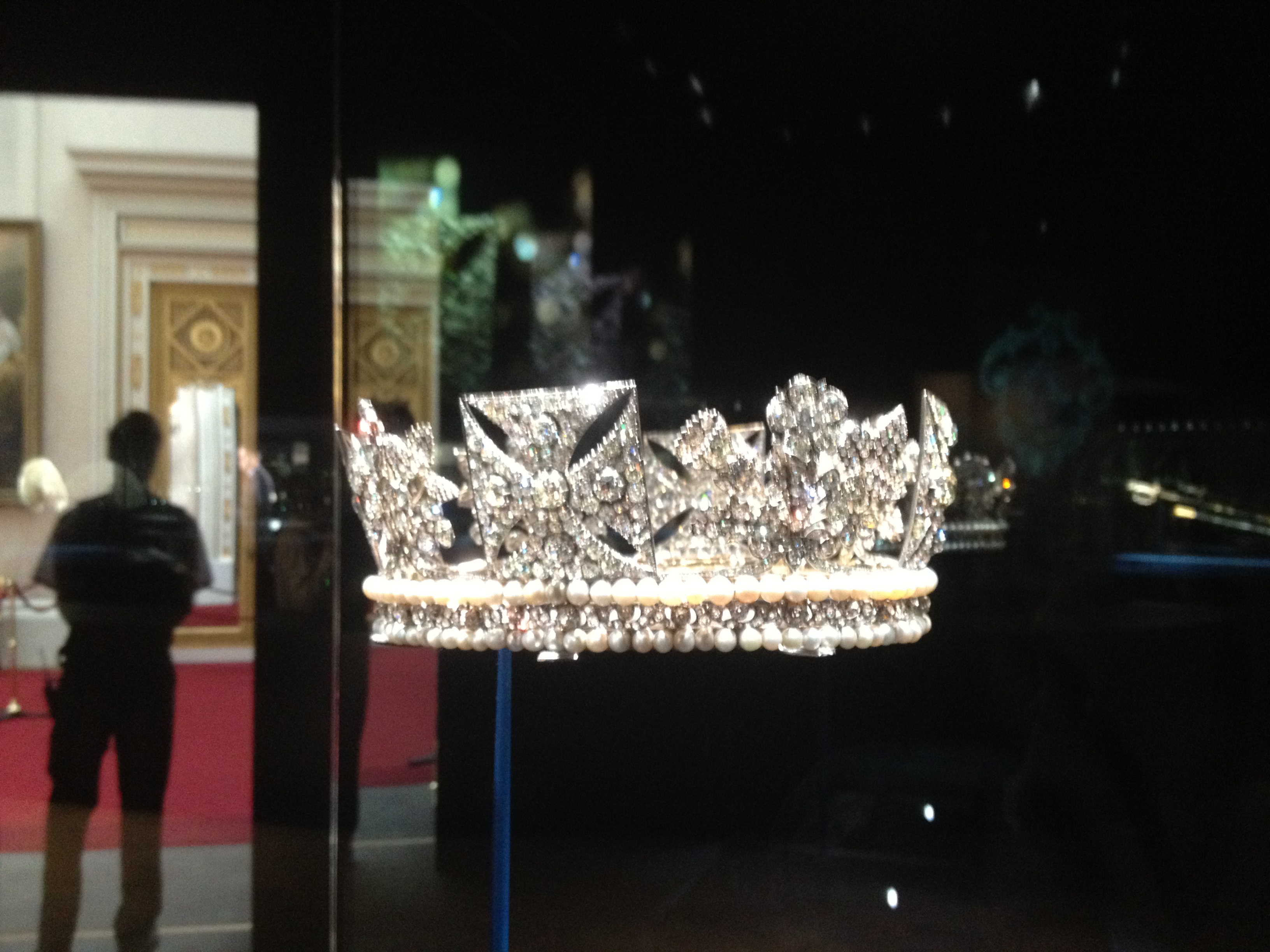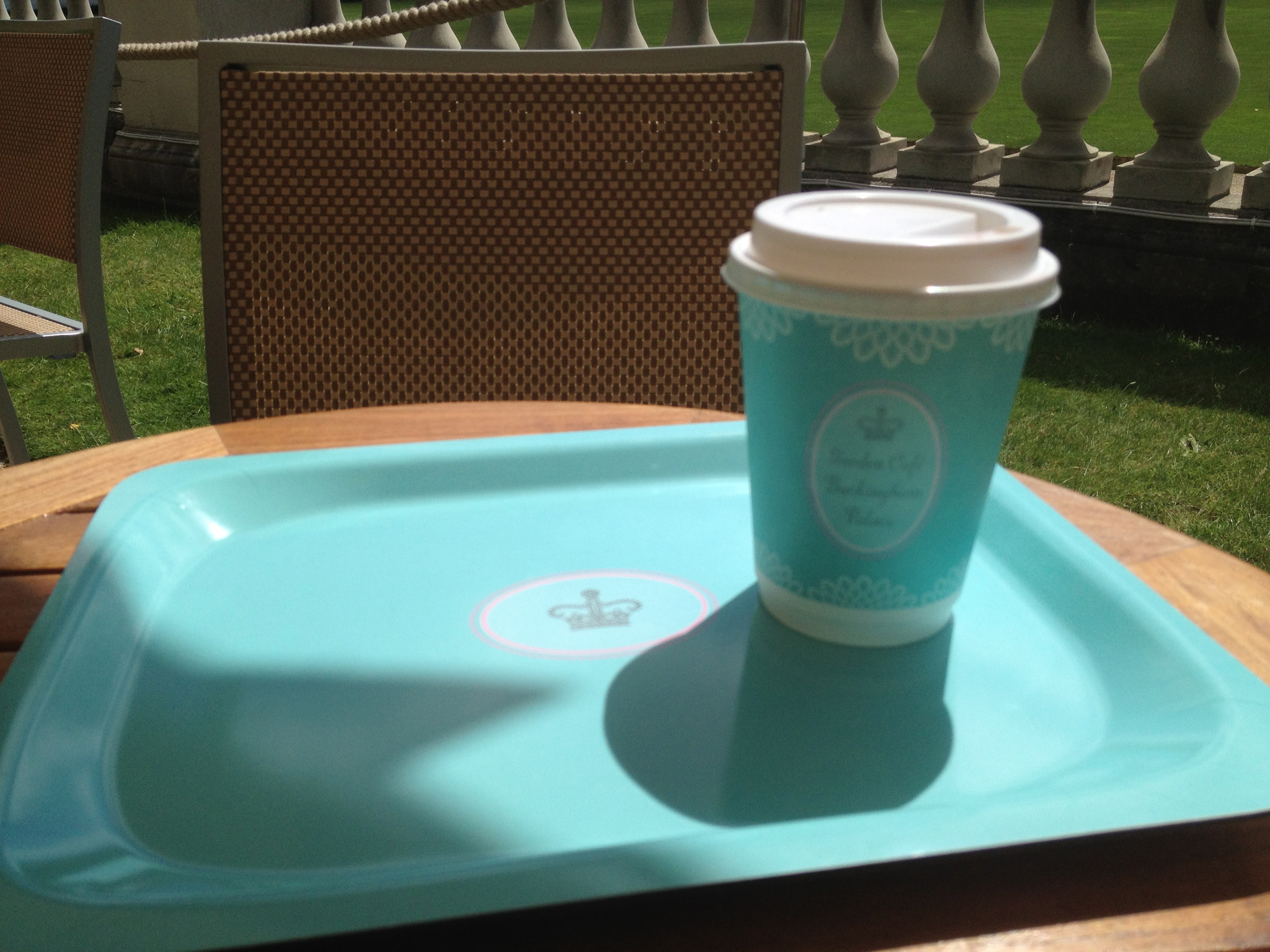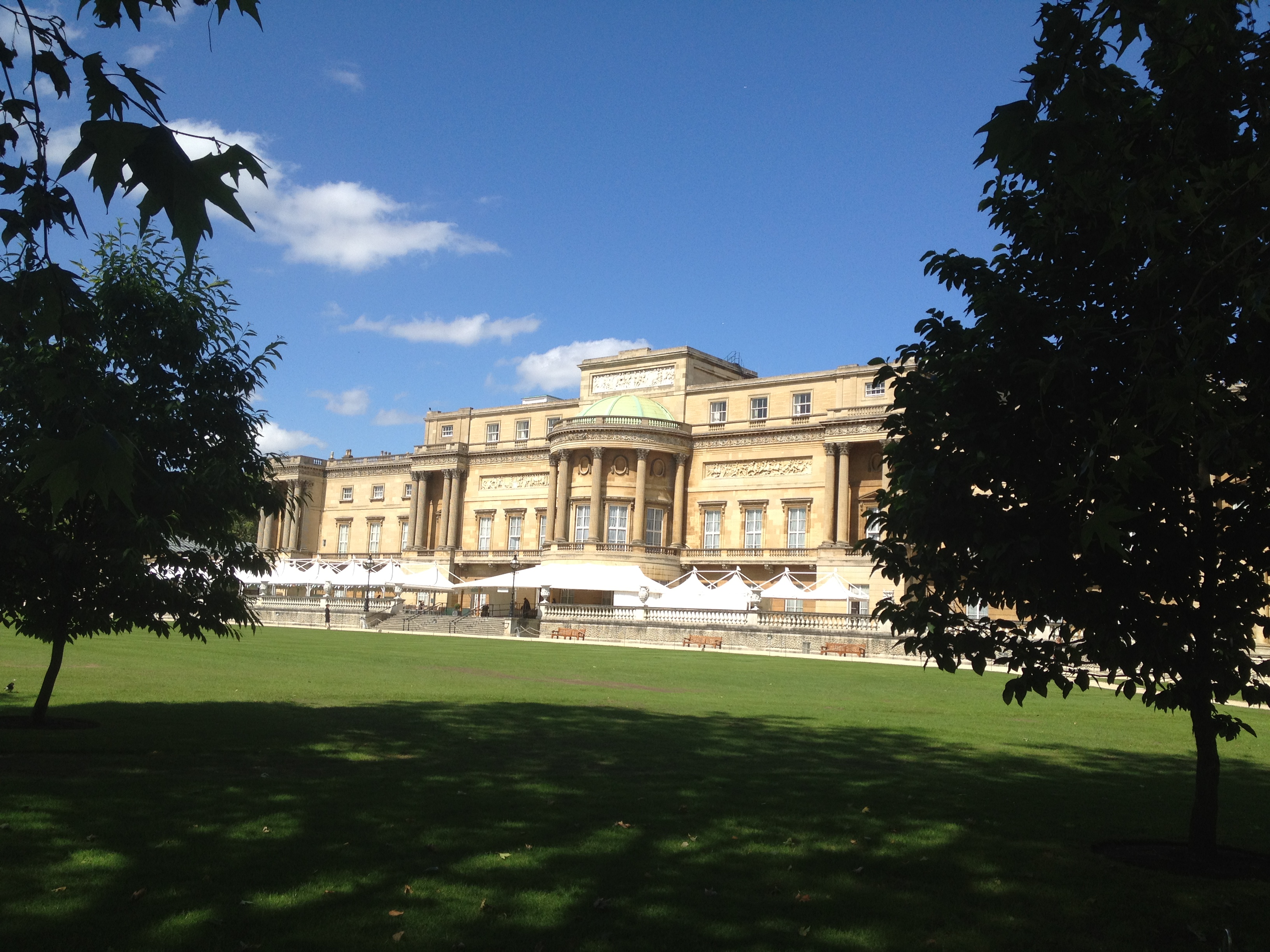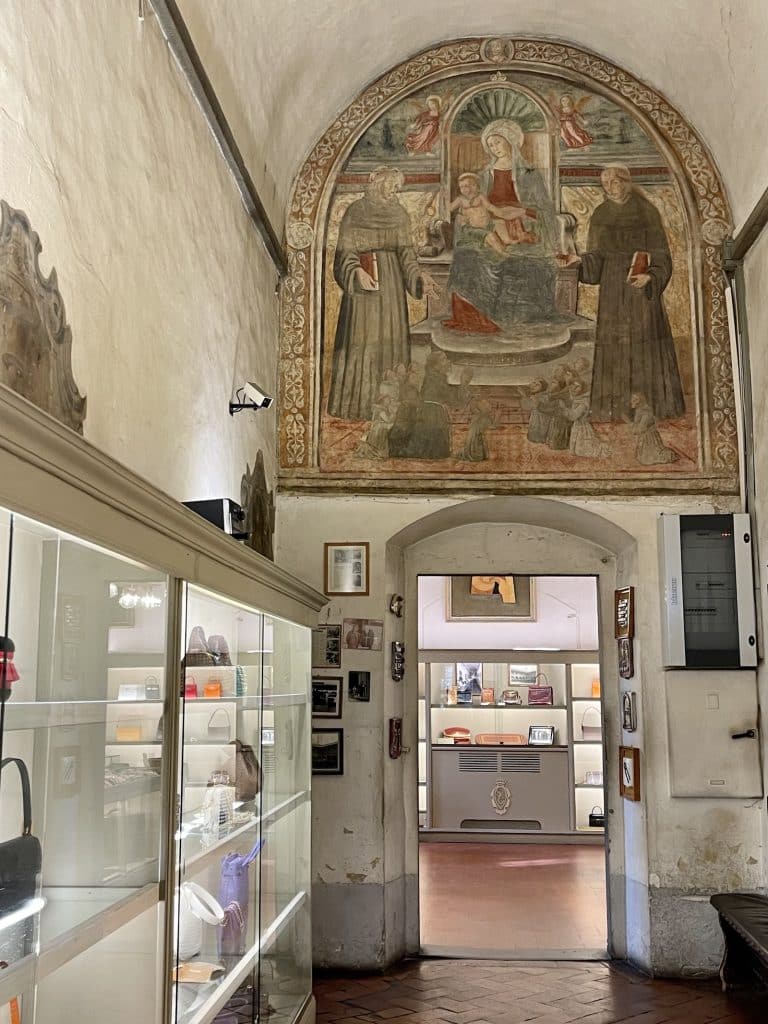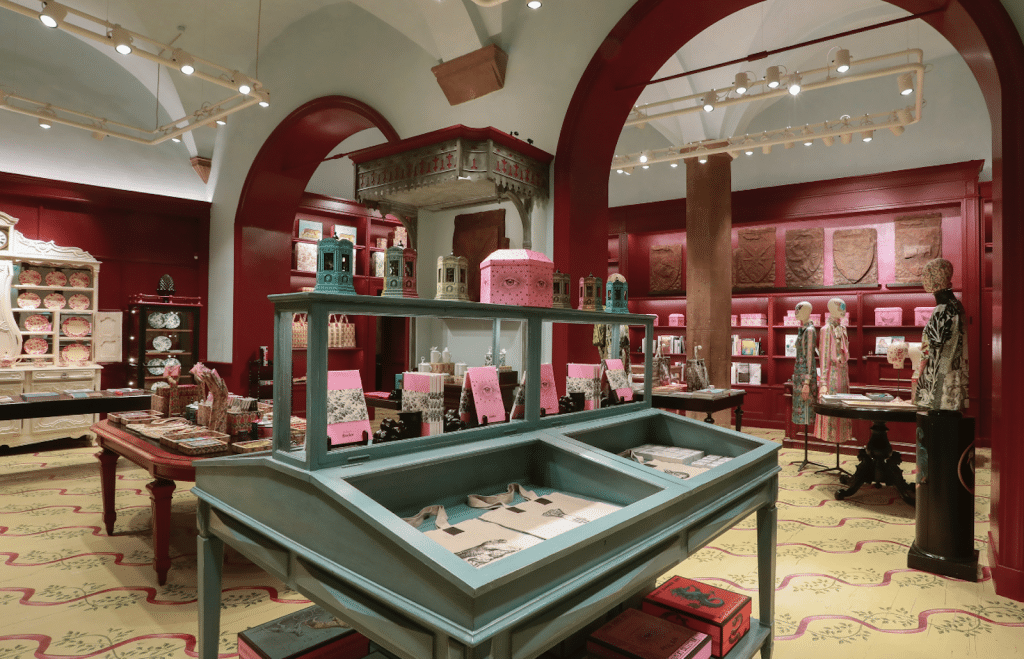Last Friday, the day before the official summer opening of Buckingham Palace, we visited a remarkably quiet palace (if you discount the assembled media and camera crews), to attend the launch of Diamonds: A Jubilee Celebration. To mark Her Majesty The Queen’s 60-year reign, this very special exhibition, curated by the Royal Collection, is exhibiting more than 10,000 diamonds, set in works acquired by six monarchs over three centuries. It’s a staggering feat; some of these pieces have never been shown in public before and include a number of The Queen’s personal jewels. The Delhi Durbar Tiara, Queen Victoria’s Fringe Brooch and the Kokoshnik Tiara, are on display for the first time.
The low lighting made it almost impossible to get decent shots without a huge lens, but we rather liked the way the tiaras seem to be eerily floating. Below is the Queen Mary’s Girls of Great Britain and Ireland Tiara; one of the most familiar of Her Majesty’s tiaras as it appears on banknotes and coins. Made by R & S Garrard & Co., the tiara can be worn as a necklace or as a coronet.
Here’s our absolute favourite tiara: The Diamond Diadem. This is one of The Queen’s most widely recognised pieces of jewellery. Despite its feminine associations, the piece was actually made for the famously extravagant coronation of George IV in 1821. It’s set with 1,333 brilliant-cut diamonds, including a 4-carat pale yellow brilliant. Consisting of a band with two rows of pearls either side of a row of diamonds, above which are diamonds set in the form of a rose, thistle and two shamrocks – the national emblems of England, Scotland and Ireland. Queen Victoria was frequently painted and photographed wearing the tiara and it appears on several early postage stamps, including the Penny Black.
One of the daintiest items on display is Queen Victoria’s Small Diamond Crown, which became the most recognisable crown of her old age. Supplied by R & S Garrard in 1870, the crown is just 10cm in diameter, weighs 140 grams and is set with 1,187 brilliant rose and mixed-cut diamonds and diamond chips. After Prince Albert’s death in 1861, Queen Victoria spent the rest of her life in mourning clothes and the Small Diamond Crown satisfied the need for a formal head ornament of colourless stones, suitable for mourning.
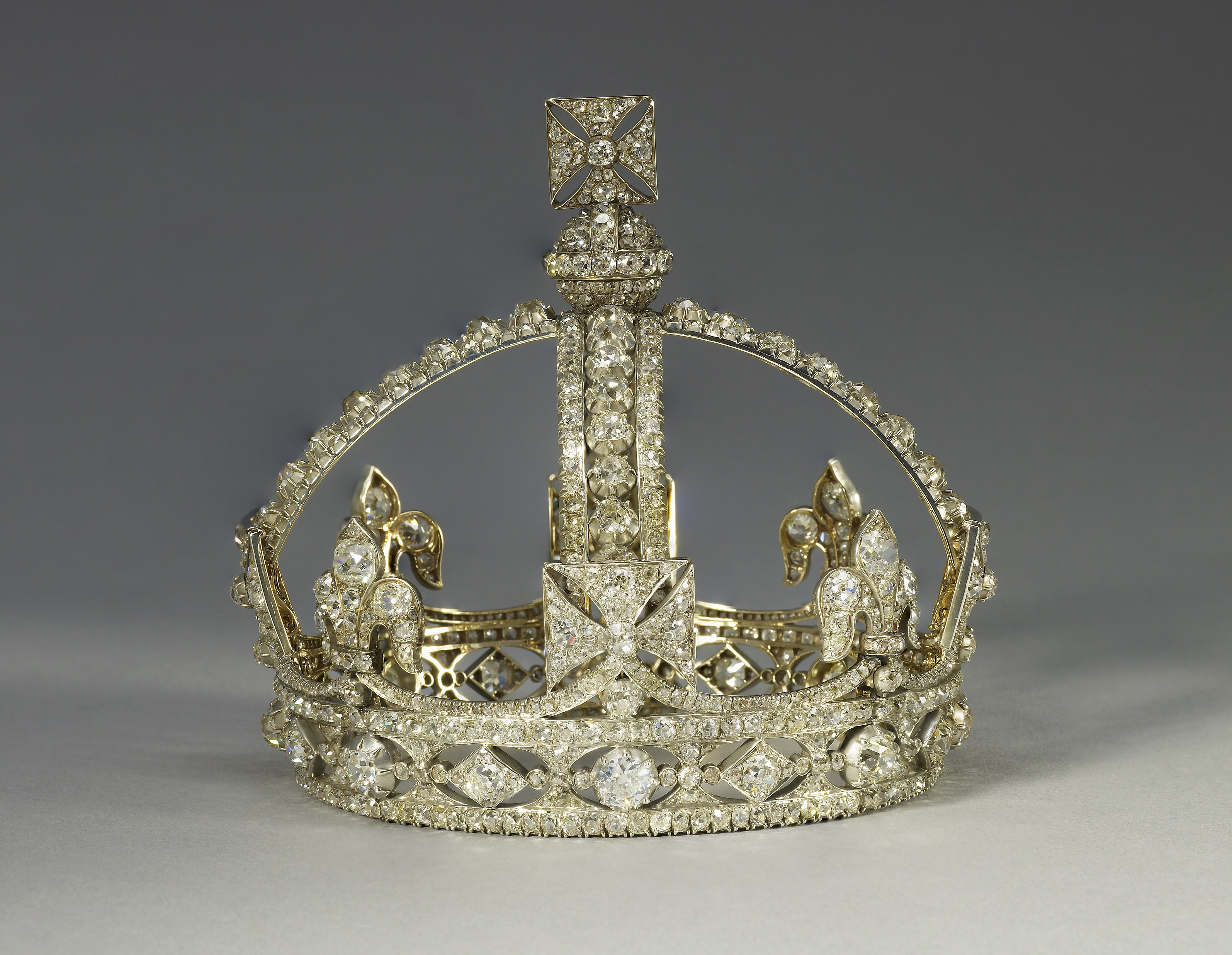
Another first, sees seven of the nine principal stones cut from the Cullinan Diamond, reunited for the first time. These seven stones are set in brooches, a ring, and a necklace. The remaining two stones form part of the Crown Jewels. The Cullinan diamond is the world’s largest diamond. In its rough state, it weighed 3,106 carats! It was discovered at the Premier Mine near Pretoria, South Africa in 1905. At first the stone was assumed to be a crystal as it was three times larger than any other diamond that had been discovered. When it was first taken to the mine manager’s office, the clerks threw it out the window, unable to believe that something so big was a diamond! It measured 10.1 x 6.35 x 5.9cm. Eventually, they discovered it was indeed true, and the diamond was named after the chairman of the mining company, Thomas Cullinan.
The Queen recently wore The Cullinan III and IV Brooch at the National Service of Thanksgiving at St. Paul’s Cathedral for the Diamond Jubilee Celebrations.
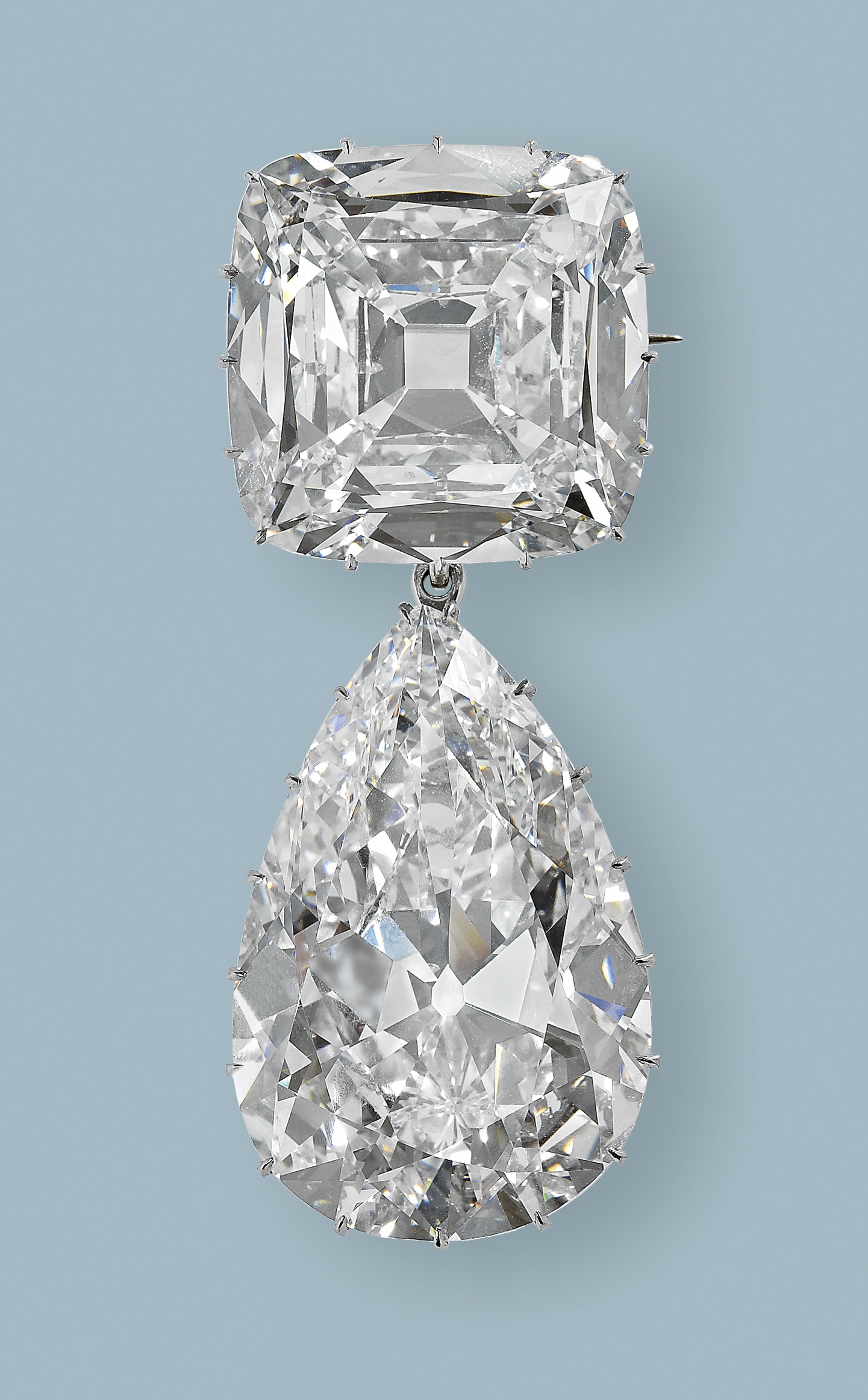
There are simply too many treasures to mention, but other jewels of note, include The Coronation Necklace, The Coronation Earrings along with The Queen’s Williamson Diamond Brooch; considered the finest pink diamond ever discovered.
And after all that bedazzlement, what a perfect place to stop for tea…
Diamonds: A Jubilee Celebration can be viewed: 30 June – 8 July and 31 July – 7 October.
For further information on tickets to the exhibition and admission to the State Rooms at Buckingham Palace, please visit: www.royalcollection.org.uk or call: +44 (0)20 7766 7300.
CELLOPHANELAND* were guests of Buckingham Palace and the Royal Collection.
Images by CELLOPHANELAND* and the Royal Collection.




